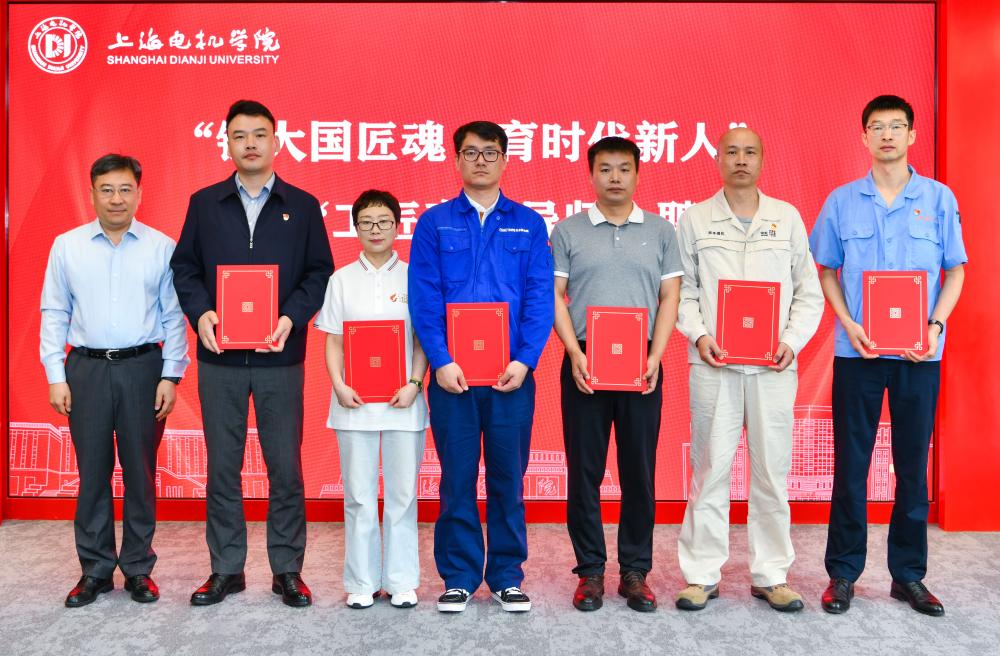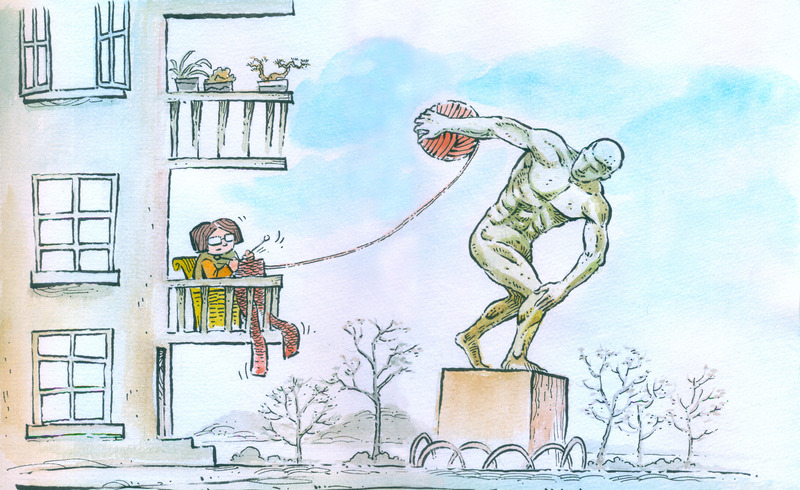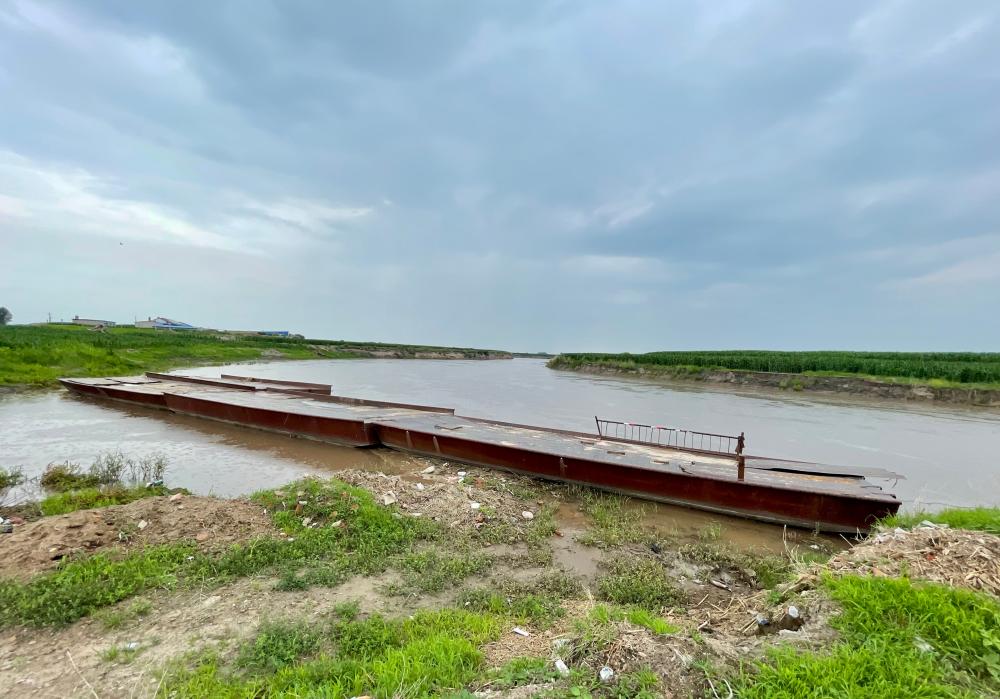Behind the "citywalk fever" lies the answer: Shanghai's industrial relics shine brightly, with potential for citizens | industry | relics
In recent years, many industrial relics in Shanghai have been revived and become popular destinations for citizens to explore.
How to make citizens go further on the basis of wanting to take a walk and see?
How to fully activate and showcase more industrial relics, becoming one of the important sources of innovation and vitality for the entire city?
Cao Yixia, a researcher at the Institute of Applied Economics of the Shanghai Academy of Social Sciences and a talent from Pujiang, Shanghai, has visited several cities in the UK and Japan that are good at protecting and revitalizing historical relics. She attempted to explore the key to answering the above question through her own observations and reflections.
Shanghai has sufficient reasons to attach importance to the protection and utilization of industrial heritage
Shangkan News: In recent years, many industrial relics in Shanghai have been revived. Some can be viewed from afar and strolled, some have become popular check-in spots for citizens to rest, and some have become art and cultural spaces such as museums and exhibition halls. But some citizens still express dissatisfaction, the distribution of destinations seems scattered, and there is not much depth to explore in some destinations. In your opinion, what unresolved issues do everyone's feedback reflect?
Cao Yixia: In recent years, there has been a "urban stroll fever" in Shanghai. In my opinion, behind the causes and driving mechanisms of the "urban stroll fever" lies the methods and directions for improving the industrial relics in Shanghai.

Why has "city stroll" become popular? I believe that, in addition to fast-paced life, the primary reason why many people fall in love with "city strolls" is to seek nourishment from the historical and cultural heritage and accumulation of the city under their feet.
In addition, the "City Walk" activity is easy to implement, requires on-site visits, provides first-hand rather than second-hand experiences and feelings, has strong sociability, and can meet more like-minded friends, all of which are important reasons why this type of activity stands out and has a certain degree of stickiness.
Through a "city stroll", participants can gain experiences and information that are full of changes and uncontrollable factors, making them more vivid, rich, and three-dimensional. Most of these gains need to be achieved through individual initiative and on-site experience, which is more spontaneous and subjective. Whether you are a native or a newcomer, the first-hand experience and feelings within your sight are always more satisfying and satisfying, adding a few credible footnotes to the "sense of belonging journey" that contemporary urbanites are destined to explore.
Pedestrians passed by outside the 1933 old workshop. Shen Jizhong
Looking at the news: The insights we have gained from interpreting the "urban stroll fever" can also be applied to the exploration and outlook of the protection and utilization of industrial heritage sites.
Cao Yixia: That's right. Moreover, Shanghai has sufficient reasons to attach importance to the protection and utilization of industrial relics, and should also make some benchmark explorations and progress in the field of industrial relics protection and utilization.
Firstly, Shanghai is a historic and cultural city, the birthplace of the Communist Party of China, the birthplace of its original aspiration, and the birthplace of modern Chinese national industry and commerce.

180 years ago, Shanghai opened its port and both sides of the Huangpu River and Suzhou River became the "major ports" for Sino foreign trade. The earliest modern water plants, shipyards, gas plants, and spinning factories in China constitute important production shorelines. Protecting and utilizing these industrial relics can not only fully demonstrate the arduous exploration of China's industrial and commercial modernization and urban municipal modernization since modern times, but also serve as a model for Shanghai's current efforts to create cultural heritage protection, inheritance, and innovative development, and make new and greater contributions to the construction of modern Chinese civilization.
The industrial heritage along the banks of "One River, One River" can be said to be the carrier of Shanghai's brand, Shanghai manufacturing, national spirit, and urban spirit. It is not only a waterfront economy and cultural tourism industry, but also a place for showcasing and experiencing Shanghai's red culture, Jiangnan culture, Shanghai style culture, and urban characteristics.
Secondly, if Shanghai's cultural and creative industry wants to achieve further and significant development, especially the further improvement of industrial level, it needs some concrete carriers to undertake. Shanghai has a large amount of resources in industrial relics that can be inherited and innovated, which can provide specific support points for the upgrading of related industries and also provide a powerful fulcrum for everyone to systematically consider the continuity of Shanghai's historical context.
Standing at the height of creating a Shanghai sample for the protection, inheritance, and innovative development of cultural heritage, what we need to focus on at least now should include: systematically sorting out industrial heritage resources, paying attention to and studying the progress of the national industrial heritage catalog, creating new experiences for the inheritance, display, and innovative development of Shanghai's industrial heritage, and promoting the deep integration of industrial heritage and industrial tourism as a far-reaching undertaking.
The M50 Creative Park by the Suzhou River has preserved many industrial heritage sites. Photo by Mao Zemei
The industrial relics that can still stay while strolling are even cuter
Shangkan News: As mentioned earlier, many citizens are not very satisfied with the protection, inheritance, and innovative development of Shanghai's existing industrial heritage. They hope that such rich historical and cultural resources can be better revitalized and utilized. Do you have any suggestions in this regard?

Cao Yixia: The reason why many citizens are not very satisfied with the protection, inheritance, and innovative development of Shanghai's existing industrial heritage is that they actually hope that after visiting the industrial heritage, they can leave some deep impressions in their hearts and form some distant echoes in their minds. It is very important to achieve a deep impression and long-lasting response, and to avoid several misconceptions about low-level development of industrial heritage.
What are the typical misconceptions of low-level development in Shangkan News?
Cao Yixia: The first misconception is to equate the revitalization and utilization of industrial heritage with pure spatial transformation. The renovation and redesign of the old space is certainly important, but the renovation and design of the entire site must be based on in-depth exploration of its historical, cultural, spiritual, and story related resources.
No matter which venue we face, we need to explore what is the connection point between it and modern civilization, in which aspects it can reflect the vitality of modern Chinese civilization, and in which aspects it reflects the urban spirit and character of Shanghai. This kind of positioning can ensure that our exploration of relevant resources has a certain depth, giving it a space for further revitalization, so that the impression gained by the audience through visiting and sightseeing will not abruptly stop with the end of the visit.
I once visited the instant noodle museum located in Ikeda, Japan. The museum introduces the development history of various instant noodles and cup noodles around the world through models, display boards, and physical objects, showcasing the various instant noodle products of the well-known Japanese instant noodle brand Nissin since 1958, many of which are no longer produced.
If that's all, it may not necessarily leave a deep impression on the audience. To my surprise, the museum specially copied the wooden house where the inventor of instant noodles opened the history of instant noodles. The furnishings in the house were the same as those in those years. Surrounding the exhibits, the founding story of instant noodles in Japan is fully narrated, allowing the audience to admire the innovative spirit of the inventors and the entrepreneurial spirit behind their business operations. In addition, the internal structure model of the giant cup noodles, the world's first cup noodle vending machine, and the cup noodle disaster relief vehicle will deepen visitors' understanding of instant noodles, allowing them to stop and think while strolling.
Behind a storytelling exhibition hall, there must be a deep integration of historical resources and spatial layout. The comprehensive use of exhibition language can achieve the internalization of infectiousness on one hand, and on the other hand, allow visitors to easily, fluently, and naturally acquire and extract knowledge, information, and inspiration during their stay. It is difficult not to leave a deep impression on people with such a design, but it can also leave an unforgettable "echo" in the hearts of the audience from the historical time and space.

The second misconception that needs to be avoided in the revitalization and utilization of industrial heritage is to allow each industrial heritage to be transformed or operated independently. A more ideal state would be to organize different industrial heritages based on underlying logic, connecting points into a surface and beading into a chain. Abroad, some countries attach great importance to the declaration of world cultural heritage. Based on the understanding of the application process and its profound impact, some cities may choose to "package" a series of relics and relics for overall planning before submitting an application.
The advantage of doing so is to lay out in advance and plan as a whole, avoiding separate and homogeneous competition among different relics. Some cities will integrate resources through a specific historical period or industry category, and plan and create related resources as a whole. In no time, a collaborative team can accumulate rich resources and lay a solid cultural foundation for further collective creation and collaboration. This is also the basic method for some well-known cities in the world to create "classic urban stroll routes". On this underlying logic, the industrial level that can be achieved through planning, design, product development, and park area operation will be extraordinary, achieving a significant leap on the existing basis. This has certain enlightening significance for us to build a socialist international cultural metropolis with global influence.
In order to achieve high standards and leading development of industrial heritage and industrial tourism, and to polish a rare cultural business card, it is also necessary to pay attention to avoiding a development misconception - emphasizing the material aspect of space creation, ignoring the public welfare and potential for shared space operation.
For an industrial heritage that can exert cultural influence, commercial operation is very important, but the part of its commercial operation is destined to serve the public, and creativity should be exerted to allow as many people as possible to experience and experience historical culture, stimulate inheritance and innovation through this space and platform. By visiting industrial heritage, citizens or tourists can understand the foundation and context of the entire city's culture, and share various historical, cultural, and creative resources carried by these spaces. This is not only a reflection of modern civilization, but also can to some extent enhance the civic awareness of "everyone builds together, everyone shares".
A staff member passes through the office area inside the Shanghai Urban Sculpture Art Center. This was originally the cold-rolled steel plant within the Tenth Factory of Shanghai Iron and Steel Group. The factory building has been idle since the late 1980s and was rebuilt as the Shanghai Urban Sculpture Art Center in 2004. It has now become a landmark cultural and artistic project in Shanghai. Shen Jizhong
How to turn good resources from "alive" to "hot"
According to the news, the "urban stroll fever" has driven the popularity of many areas, parks, and streets where industrial heritage is located. However, some creators of industrial heritage have been inspired by "internet celebrity" cases, but have not been able to achieve a win-win situation of popularity and reputation in practice. Citizens and tourists, while watching the excitement, did not leave a deep impression on the venue. It's hard to say whether one can receive nourishment from intelligence and trigger inspiration. What is the key to achieving appropriate development and utilization of good resources?

Cao Yixia: To make good resources suitable for development and utilization, the first step is to make them come to life, and then to make them popular. Behind this lies the deep integration of career and industry.
The so-called "come to life" refers to exploring the cultural core and value of industrial heritage. The best way to achieve this process is to involve as many stakeholders as possible on the basis of preserving historical materials and data information. The subjects referred to here can include planners, designers, homeowners, operational teams, historians, etc. The advantage of doing so is that the functional positioning and design of the venue can be comprehensively considered, and the derivative products generated in the later stage can also be more diverse and rich, bringing a comprehensive experience to the audience.
During our inspection in Japan, we visited the newly established headquarters of a century old dessert company, which is also the headquarters of the company. From the perspective of appearance and layout, this venue adopts a typical farm operation mode, while providing a series of activities such as catering, visiting, studying, shopping, etc.
Impressively, one factory building adopts a transparent design, allowing the entire production process to be presented to the audience. There is also a coffee shop above this transparent factory building, allowing the audience to observe the flowing production line downstairs while drinking coffee. This comprehensive experience is favored by modern urbanites, and behind it lies the cooperation and collaboration of multiple team members such as family inventory, resource sorting, layout planning, value mining, and creative operation. With such cooperation as the foundation, it is also more conducive for the entire collaborative team to find suitable means of delivering value.
The Shanghai Museum of Contemporary Art under aerial photography. The Shanghai Museum of Contemporary Art was renovated on the basis of the Urban Future Pavilion at the 2010 Shanghai World Expo. The venue was originally the Shanghai Nanshi Power Plant. Nanshi Power Plant is the first ethnic power generation enterprise in Shanghai. Shen Jizhong
Looking at the news: Value mining is very important, and the transmission, interpretation, and re innovation of value are also very important.
Cao Yixia: Yes. In recent years, many viewers have found it difficult to be satisfied with simple and traditional exhibition methods, and new exhibition techniques have also emerged, providing rich new possibilities for value mining. In this regard, the industrial heritage revitalization team should keep up with the times and use modern methods and techniques, especially those favored by the younger generation, to interpret history, culture, and spiritual connotations as much as possible. At the same time, as much as possible, we welcome diverse collaborators to participate in creativity in an open manner, promoting everyone to view the same goal or theme from different perspectives, and generating more innovative solutions based on sufficient communication. Considering the importance of promoting international cultural exchange, from exhibitions to interactive activities and the creation of communication spaces, it is also necessary to use global and international exhibition vocabulary as much as possible to facilitate understanding, participation, and communication among overseas friends.

Britain is a pioneer in turning good resources from "alive" to "fire" and transforming industrial sites into world cultural heritage sites. There are many experiences and practices worth learning from and learning from.
In the 1980s, Britain made good use of its profound industrial revolution background to develop industrial heritage tourism led by unofficial organizations, and gradually formed a scene of sustainable development and symbiosis between historical sites and communities. The most successful case is the Iron Bridge Canyon Museum Group located in Shropshire, UK.
Nowadays, although the 10 museums in Tieqiao Canyon have different thematic features, they always adhere to the corporate spirit advocated by their founders. Taking the most popular open-air museum, the town of Victoria on Mount Britts, as an example, professionals play the role of Victorian era residents, taking on the roles and responsibilities of tailors, bakers, blacksmiths, and other professions, showcasing various traditional crafts to tourists and integrating education with entertainment; Other exhibition areas, such as the Browsley Pipeline Museum and the Tar Tunnel, vividly depict the past industrial boom and recreate the unique historical charm of British industrial development. The success of the Iron Bridge Canyon not only attracted many old industrial countries to emulate, but also greatly changed the form of "tourist factories" and the business models that can be carried.
The picture shows the interior of the Shanghai Mint Museum.




